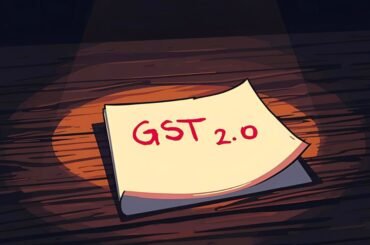Have you ever wondered why picking the right strike price can change a trade from a win to a loss?
I start this guide by defining the core idea: the strike price fixes the level where an option buyer may act while the market and stock move around it.
I explain how moneyness — in-the-money, at-the-money, or out-of-the-money — shapes payoff, breakeven, and the risk I accept in my strategy.
In India, exchanges list the available options contract strikes and liquidity varies by strike, which affects execution and the money you spend.
My approach ties outlook, volatility, and position sizing to a clear selection rule so I avoid thinly traded strikes and unnecessary cost.
Read on for actionable steps and examples that let you translate information into repeatable trading choices rather than guesswork.
What I Mean by Strike Price in Options Trading
I define the strike as the fixed level in a contract that gives me the right to buy or sell an underlying asset. This benchmark stays constant while the market and the stock move around it.
Core definition: strike, exercise, and the underlying asset
A call lets me buy the asset at the strike; a put lets me sell at that same fixed level. The exercise decision uses the strike at or before expiry. Exchanges list the available strikes for each options contract, so I pick only what exists on the ladder.
Moneyness basics
Moneyness shows how the market price compares to the strike. If the stock is above the strike, a call is in-the-money. If near the strike, the option is at-the-money. When below, it is out-of-the-money. The reverse applies for put options.
- ITM options have intrinsic value and higher likelihood to finish valuable.
- ATM options trade with heavy time value and faster decay close to expiry.
- OTM options cost less but need larger market moves to profit.
| Type | Moneyness | Exercise condition |
|---|---|---|
| Call | ITM/ATM/OTM | Stock price > strike to exercise |
| Put | ITM/ATM/OTM | Stock price < strike to exercise |
Strike Price vs Spot Price in Simple Terms
One number is locked in when the contract lists; the other updates every trade tick.
Why that matters: the fixed strike anchors my right to buy or sell, while the market price changes through the day based on flow and news.
Why the fixed strike and the moving market price matter
I watch how far the live market sits from the strike because that gap drives an option’s premium and my chance to profit.
When the spot moves closer to my level, gamma and sudden swings matter more, so I may cut size or hedge to limit risk.

Quick scenario: when the spot moves above or below
Say I buy a call with a ₹500 strike and the spot rises to ₹550. The call becomes valuable relative to that fixed level.
If the spot stays under ₹500, exercising usually isn’t useful and the contract can expire worthless unless time value and volatility help.
- The premium tracks distance to the strike, implied volatility, and time left.
- If spot briefly pierces the strike without momentum, decay can erase gains.
- Liquidity often concentrates near current market levels, which helps execution when I act fast.
| Situation | When | Action I take |
|---|---|---|
| Spot above strike | Call gains intrinsic | Hold or sell to lock profit |
| Spot below strike | Call out-of-the-money | Exit or cut loss before decay |
| Spot near strike | High gamma risk | Reduce size or hedge |
How Moneyness, Premiums, and Time Value Shape Price Options
I start with a simple idea: an option’s premium equals intrinsic value plus time value. That split guides how I pick a strike price for every trade.
The intrinsic part reflects how deep in the money the contract sits. Time value represents the probability-weighted chance the asset moves before expiry.
Premium drivers: intrinsic value vs time value
When an option is in the money, intrinsic value dominates and delta rises. Out-of-the-money contracts are mainly time value and react more to volatility.
Implied volatility: how market uncertainty shifts option value
Implied volatility moves premium even if the underlying does not. Policy news, earnings, or global shocks can lift implied volatility and raise option value fast.
Time decay: why ATM options erode faster day by day
At-the-money contracts lose value fastest as expiry nears. I reduce exposure to ATM positions close to expiry to limit losses from rapid decay.
Liquidity and bid-ask spreads: the hidden cost in prices
- I never trade only on the last traded level; I watch current bid-offer and depth.
- Wide spreads are a real cost to traders and investors and can distort fills.
- Liquidity usually concentrates near popular strikes and near-term expiries, improving execution.
| Factor | Typical effect | How I act |
|---|---|---|
| IV rise | Premium up | Tighten stops or sell premium |
| ATM near expiry | Fast decay | Reduce size |
| Wide spread | Higher slippage | Wait or use limit orders |
My Options Strike Price Selection Framework
I begin every trade by writing a short market thesis that ties my view to a specific target and time window. That note sets the rest of my selection process and keeps me honest about risk and reward.
Start with a clear market view and horizon
I capture my expected move, the date I expect it by, and the reason behind it. From that I shortlist contract strikes that match the projected stock price at expiry.
Match risk tolerance to moneyness
I pick deeper-in-the-money contracts when I want higher probability and steadier P&L. I choose near-the-money for a balance, and out-of-the-money when cost matters and I accept total-loss risk.

Breakeven, time, and execution checks
I compute breakeven up front and ensure my target gives a viable reward relative to my premium. I match the expiry date to the thesis so I avoid unnecessary theta decay or overpaying for time.
- I check liquidity, volume, and spreads at candidate strikes to reduce slippage.
- I adjust for implied volatility: low IV favors nearer strikes; high IV nudges me toward protective structures.
- I size every trade and set profit targets, stops, and roll rules before entry.
| Factor | When to prefer | My action |
|---|---|---|
| Higher probability | ITM contract | Buy deeper contract and reduce size |
| Lower cost | OTM contract | Accept higher decay and set clear exit |
| Event risk | Earnings or policy date | Widen hedge or avoid single-leg trade |
Strategy-Specific Choices for Strike Price Options
When I pick an option strike for a trade, I match the strike to the trade’s intent and time horizon. My goal is to balance probability, cost, and how I will manage risk if the market moves against me.
Directional call option: when to prefer ITM vs OTM
I favor an ITM call when I want stronger delta and less chance of total premium loss. That keeps my position more responsive to a rising stock.
I choose an OTM call only if I expect a fast, large move and accept higher decay and lower probability of success.
Directional put options: positioning for downside moves
For puts I lean toward slightly ITM or near-ATM strikes. That keeps breakeven realistic and preserves meaningful downside sensitivity.
Income trades: covered calls and cash-secured puts around market price
When generating income, I sell calls just above the market to harvest time value while leaving some upside. I sell cash-secured puts below spot to aim for entry at a better level.
Volatility plays: how I pick strikes for high IV vs low IV environments
In low IV, I buy nearer-to-money strikes where implied moves are cheaper. In high IV, I prefer ITM or debit spreads to control vega and stabilize value.
| Strategy | Typical strike choice | Why I pick it | Key risk to monitor |
|---|---|---|---|
| Directional call | ITM for steady gains, OTM for leverage | Delta and probability vs payout | Time decay and liquidity |
| Directional put | Near-ATM or slightly ITM | Maintains breakeven and sensitivity | Sharp market drops and IV spikes |
| Covered call / cash-secured put | Just outside current market | Collect time value, preserve upside or entry | Assignment risk and gap moves |
| Volatility play | ITM or verticals in high IV; nearer money in low IV | Control vega and cost | IV collapse or event risk |
Real-World Examples: From Premium to Profit
A concrete example helps me convert abstract concepts into real trade outcomes.
Call example and sell vs exercise
Let’s say ABC trades at $50 per share. I buy one six-month call option with a $60 strike for $2. That contract costs $200 total.
At expiry ABC is $70. The call is worth $10, so the option value is $1,000. After subtracting my $200 cost, my profit is $800.
I can sell the option for its value or exercise to buy 100 shares at $60 and sell at $70. Both paths net the same $800 unless I choose to hold the shares for more upside.
Put path and breakeven math
- Call breakeven = strike + premium (here $60 + $2 = $62).
- Put breakeven = strike − premium.
- If a bought put moves below its strike by more than the premium, I gain; assigned short puts mean owning shares at strike minus premium.
| Action | Result | When I use it |
|---|---|---|
| Sell option | Clean exit, avoid exercise mechanics | Good liquidity |
| Exercise | Take or assign shares | When I expect further upside |
| Close early | Lock profit, avoid late decay | Move occurs before expiry |
India-Focused Considerations for Option Strike Price
When I trade in Indian markets, liquidity and the exchange ladder often decide my entry more than pure theory. I first confirm which contract rungs and expiries the exchange lists for the underlying asset.
I watch volume, open interest, and current bid-ask spreads. Last traded values can mislead, so I prefer steady two-sided flow to avoid bad fills. Lot sizes set the minimum exposure I must accept, and that shapes my position sizing.
Tick increments influence how spreads form on far OTM lines. Active at-the-money lines show faster time decay, so I tighten my time horizon near expiry. I also adjust around local catalysts like RBI moves or major earnings, which shift implied volatility and repricing across nearby strike prices.
Practical checklist
- Confirm listed contract rungs and expiries for the share or index.
- Check volume, open interest, and two-sided quotes before order entry.
- Factor lot size, tick size, and settlement rules into risk controls.
| Factor | Impact | My action |
|---|---|---|
| Volume & open interest | Better fills and fair discovery | Prefer high OI lines |
| Lot size | Defines exposure | Adjust position sizing |
| Tick size & spreads | Wider on thin lines | Use limit orders or avoid thin strikes |
Conclusion
I treat every option contract as a small project with defined goals and limits.
Picking the right strike price links my market view, date horizon, and risk tolerance to clear execution rules. I balance moneyness, implied volatility, time decay, liquidity, and spreads before entry.
My checklist is simple: thesis, moneyness, breakeven, expiry date, liquidity, and an exit plan. I watch the market price versus the strike and act if the stock path diverges from the plan.
I usually close positions in the market to capture value cleanly and reserve exercise for specific investment reasons. I review each trade to refine rules and keep improving how I manage money and risk.




